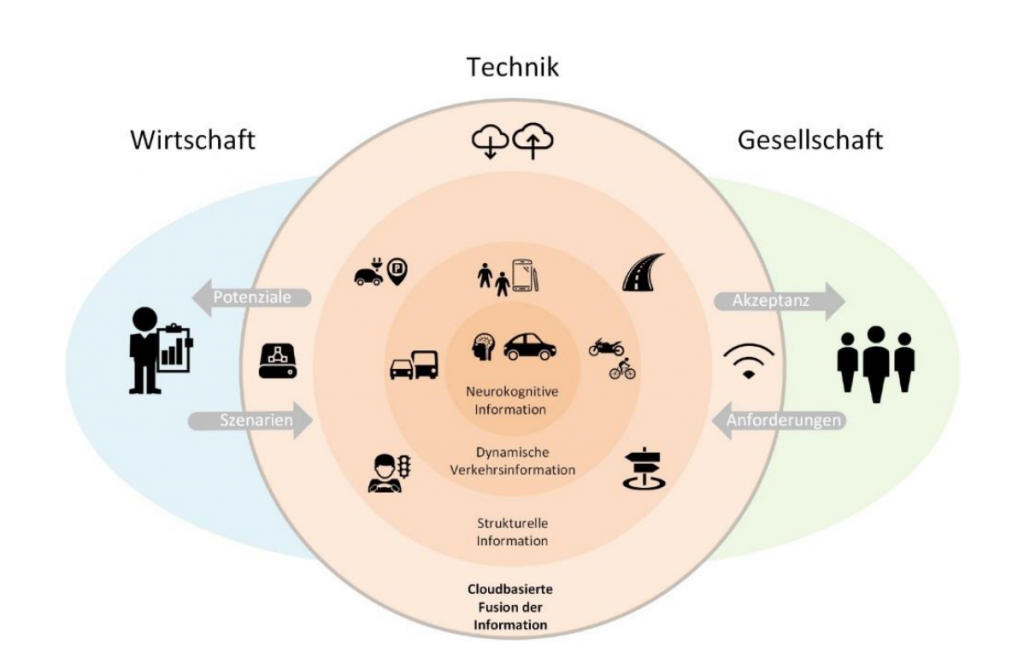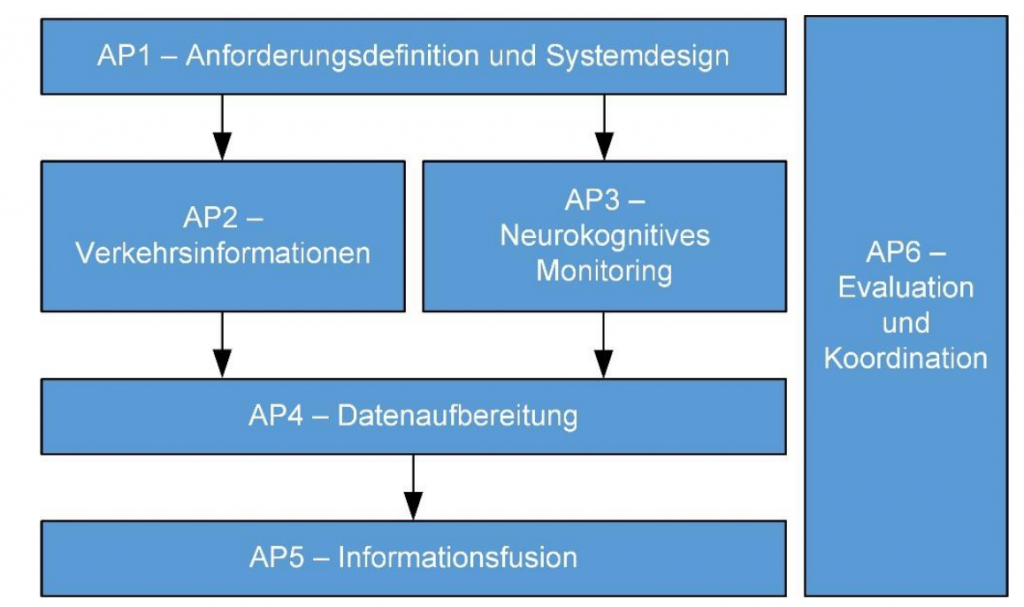kantSaar (2018-2020)

Motivation
The future of transport lies in cooperative and (partially) automated driving. One of the basic assumptions in research and development is that people, traffic environment and vehicles increasingly form a cooperative unit for (partially) automated driving. Assistance technologies make driving safer and complement the driver’s natural senses. At the same time, the driver must process an ever-increasing range of information and warning messages, resulting in increased distraction from the driving task. The neurocognitive effects of this flood of information are the subject of current research.
In the kantSaar project, the System Neuroscience & Neurotechnology Unit (SNNU) and the Traffic Telematics Research Group (FGVT) are working together to investigate the interaction between driver and automated vehicle.
The central challenge is to adapt cooperative, (partially) automated driving to the heterogeneous totality of all road users in realistic driving situations. The fusion of data from the traffic infrastructure and from the (partially) automated vehicles forms the basis for the adaptation of the human-vehicle interfaces and for the simultaneous optimization of the traffic flow in the city.
With the project kantSaar the focus of the existing ITS test field Merzig (ITeM) of htw saar is extended from purely ad-hoc based communication towards cooperative and automated driving. Thus, building on the project, the next step towards the Smart City can be taken to aggregate technology-based changes and innovations in urban areas and the surrounding area. Here, attention must be paid to the systematic design with regard to user acceptance and traffic requirements from society. Industry can formulate application scenarios and discuss technological potentials. The area shown in orange in the figure summarises the technological area of the project. It shows the extension of the knowledge horizon from the individual to the transport infrastructure and cloud based fusion. The blue economic sector and the green social sector form the bracket in which the project is located in the area of tension between the economy and society.

Focal points
- dynamic and static traffic information
- neurocognitive information of the driver
Project goals
- anonymous map of neurocognitive-affective situations of drivers in urban environment
- database with neurocognitive and traffic-related data
- data fusion to a allover traffic situation analysis
Work package overview
